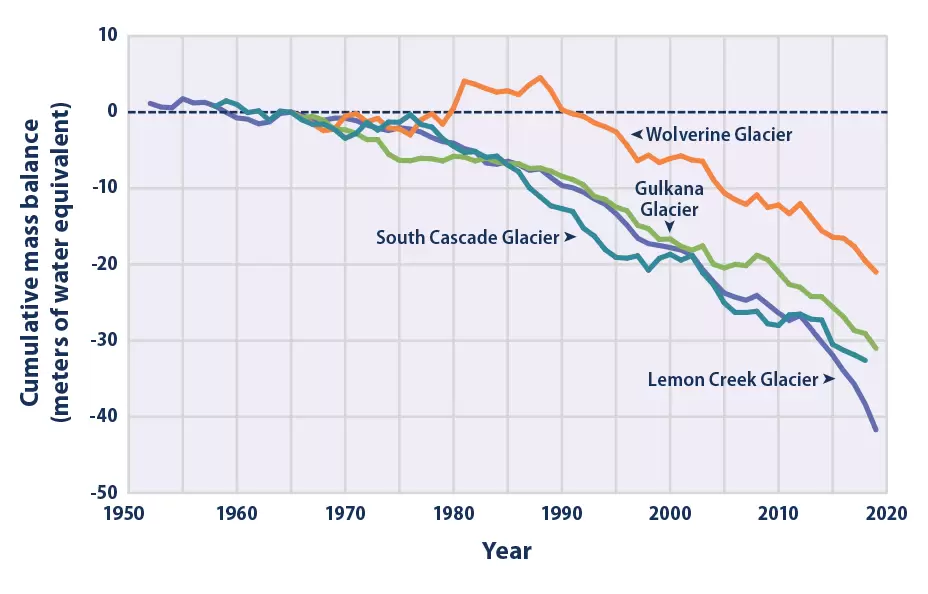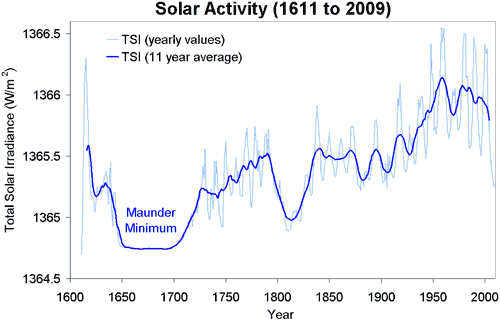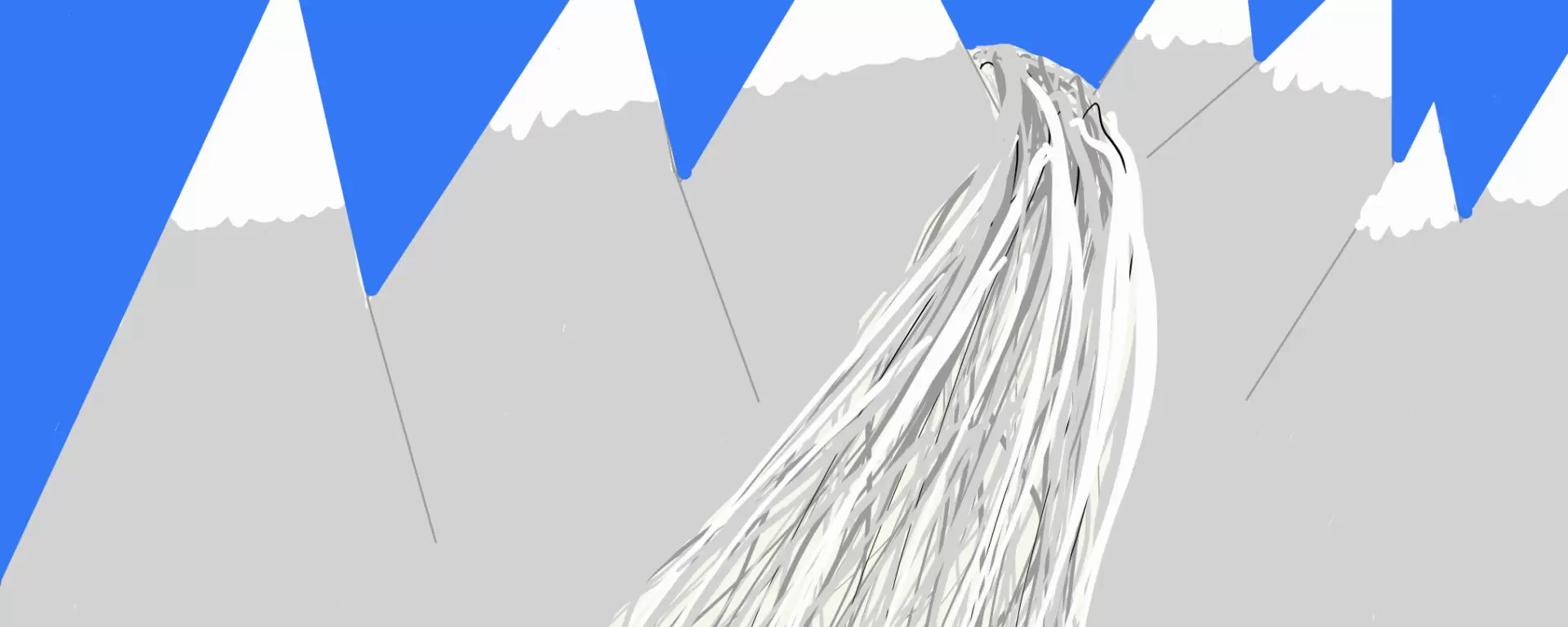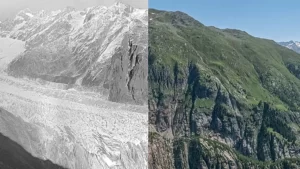The disappearing glaciers of Switzerland are the focus of this work, in which we deal with one of the most important ecological phenomena of our time. The melting of the glaciers is affecting the world, but the changes are particularly evident in Switzerland. The majestic glaciers that once dominated the Swiss landscape are shrinking at an unprecedented rate. In order to understand the extent of this phenomenon, we set out and conducted intensive research.
Our journey of discovery took us to the Glacier Garden in Lucerne, where we gained an in-depth look at the past, present and future of Switzerland’s glaciers. We also had the opportunity to conduct an inspiring interview with a renowned expert in the field.
Our experiences
We went to the Glacier Garden in Lucerne and it was an interesting outing. The Glacier Garden is a unique attraction that offers a glimpse into Ice Age history.
The highlight of the visit was undoubtedly the Glacier Garden itself. The Glacier Garden is a giant boulder that was transported and deposited by glaciers during the Ice Age. The boulder is 170 meters long and up to 30 meters wide. It was incredible to walk around on this boulder and see how it has changed over the past millennia.
Another highlight of the visit was visiting the Ice Cave. The Ice Cave is a man-made cave similar to the ice chambers formed in glaciers during the Ice Age. It was fascinating to see the ice being formed and hear it crack and crackle as it melted.
The Glacier Garden also features a variety of interactive displays that explain life in the Ice Age and the formation of the Alps and glaciers. There was also an observation tower from which one had a breathtaking view of the city of Lucerne and the surrounding mountains.
Overall, the visit to the glacier garden was an unforgettable experience. We learned a lot about the geology and history of the area and had a lot of fun exploring the ice cave and giant boulder. We would definitely recommend everyone to visit the Gletschergarten if they get the chance.
Glaciers in Switzerland
The Alpine glaciers in Switzerland are impressive natural phenomena of the mountain landscape. Unfortunately, they have also become a symbol climate change of. The melting of glaciers has accelerated sharply in recent decades and has now become a serious threat to our environment and our future.

Global warming
The cause of melting glaciers is global warming. Over the course of the 20th century, the average global temperature has increased by about 1 degree, and the effects of this increase are becoming more apparent. In Switzerland, glaciers have shrunk by about a third since 1850, and the trend is continuing. Experts warn that by 2050 around 75% of the glacier area could disappear permanently.
The effects of the melting ice are far-reaching. The glaciers are important water reservoirs for the region, as they provide the rivers with constant water even in the dry months. However, as they continue to melt, the water in the rivers will also be reduced, affecting agriculture and tourism. In addition, the meltwater contributes to the rise in sea levels, which in turn threatens coastal regions around the world.
Shrinking glaciers
The shrinking glaciers are not only leaving visible marks on the landscape, but are also having a serious impact on mountain wildlife. As the landscape changes, the slopes become less stable, which can pose a serious problem for some wildlife species. The ibex also depends on the glaciers as a food source, but the melting also reduces the supply of food crops, which has a negative impact on the animal population in the long term.
Ice age
We asked a glacier expert and he said that an ice age is not imaginable in the near future. However, he can generally say that the possibility of a future Ice Age is a topic that is being debated in the scientific community. Climate changes on Earth are complex and are influenced by many factors, including solar activity, atmospheric composition, ocean currents and tectonic activity. We are currently in a warm interglacial period known as the Holocene. According to scientific evidence, it is unlikely that we will enter a new ice age in the near future. Current climatic changes, especially global warming due to human influence, could even lead to further reducing the probability of a new ice age. It is important to note that the climate changes over time and future developments depend on various factors. Scientific research and climate monitoring help to improve the understanding and prediction of possible future climate scenarios.

Interview
We have an interview with a PhD student from ETH Zurich named Aaron Cremona.
Glaciers always melt in the lower region during the summer. Since around 1850 they have been losing mass. The reasons for this are clearly rising temperatures. Glaciologists have been able to observe and study this loss throughout the last century.
2. Why is it so important to you to prevent further melting.
The melting of glaciers has a number of impacts (see answer 3). Therefore, it is important to reduce this melting.
3. What are the impacts if the glaciers continue to melt? For Switzerland and for the whole world?
Tourism: Glaciers are a tourist attraction and an important identifying feature of Switzerland. If there are no glaciers, the country will have to present itself differently. Our Alps will still be beautiful, even with less ice. They will just look different.
Water balance: Glaciers store water in the winter and release it in the summer. In addition, they store water in cool, wet years and release it in dry, hot summers. They play a central role in regulating the flow. If the glaciers disappear, this function is lost. This will have an impact on water availability in alpine regions, but also beyond, as the major rivers of Europe originate in the Alps and are substantially nourished by the glaciers in summer.
Hydropower: With the Energy Strategy 2050, Switzerland wants to focus on hydropower. Nearly all reservoirs get their water from glaciers. They will continue to be filled in the future, but the water will come at different times of the year.
Natural hazards: When glaciers retreat, the landscape changes. This can lead to stability problems with slopes. New lakes form. These can break through, especially if they are dammed by ice.
Sea level rise: It is estimated that global sea levels could rise from 0.3 to 1 m by 2100. The melting of glaciers contributes a considerable proportion to this rise. A rising sea level does not directly affect us in Switzerland, but there will be millions of climate refugees.
All cities located on the borders of oceans and seas, where a rise in sea level would cause the resettlement of those living there.
5. Do you see an improvement in the current situation in the near future?
The retreat of glaciers cannot be prevented in the medium term. Unfortunately, even with the most favorable climate scenarios with a strong reduction of CO2 emissions, most glaciers in Switzerland can no longer be saved: 4 out of 5 are expected to disappear, even if the emission of greenhouse gases were to be halted tomorrow. With a very strong reduction of CO2 emissions, about 20% of the glaciers could be preserved until 2100.
6. Can you imagine that there could be another ice age in the future?
If temperatures drop again, glaciers could recover and there may be another ice age. However, this will certainly not be in the near future.
Conclusion
For these reasons, the melting ice in the Alps represents a major challenge. However, climate change is not inevitable, but a consequence of our actions. We can all contribute to reducing greenhouse gas emissions and thus combating climate change. By switching to renewable energies, doing business more sustainably and consuming more consciously, we can make our contribution to ensuring that the glaciers remain an integral part of our mountain world for a long time to come.
Tim Fehr & Andrin Scheiwiller
Sources
In addition to the information we have taken from the interview, we have supplemented our text with information from the following pages:
[ 1] Glamos: Schweizer Gletscher (glamos.ch)
[2] Epa: Climat indicators (epa.gov)
[3] Skepticalscience: Ice age (skepticalscience.com)
[4] Einstein: Unsere Gletscher schmelzen (srf.ch)
[5] Picture from diffrence between now and years ago: Landscape (euronews.com)
You can find more useful information about glacier melting on the following pages:
[1] Glacier melting: Swiss glacier melt (Geo.uzh.ch)
[2] Fast melting: Glacier melting(theconversation.com)
On-topic posts on dontwastemy.energy
☷ See the project teams here »
☵ Some words about the contributions »
☴ Our sponsors and partners » (the-horse.education)






Your description of the journey to the Glacier Garden in Lucerne was enjoyable to read. I could sense how much you appreciated the experience, and I imagine it left a lasting impression, making you more conscious about glaciers.
The discussion about a possible future ice age was intriguing. The timeline is hard to grasp, as it far exceeds the timescale of modern human existence.
As a suggestion, it might be helpful to include a graphic with data on Swiss glaciers, since your focus is mainly on them. I was also curious about how the ibex relies on glaciers for food and how specific crops are affected by melting.
Overall, well done, you created a very informative publication.
Andrin and Tim,
An impressive article! Your detailed investigation and portrayal of the problem of the disappearing glaciers in Switzerland touched me. Especially the connection of personal experiences in the Glacier Garden with scientific data and the expert interview brings the urgency of the topic to light. It would be interesting to learn more about possible solutions and ongoing initiatives in a follow-up article. Kudos for your work – such contributions are essential to raise awareness on environmental issues. Great cover photo!
Well done
thank you;)